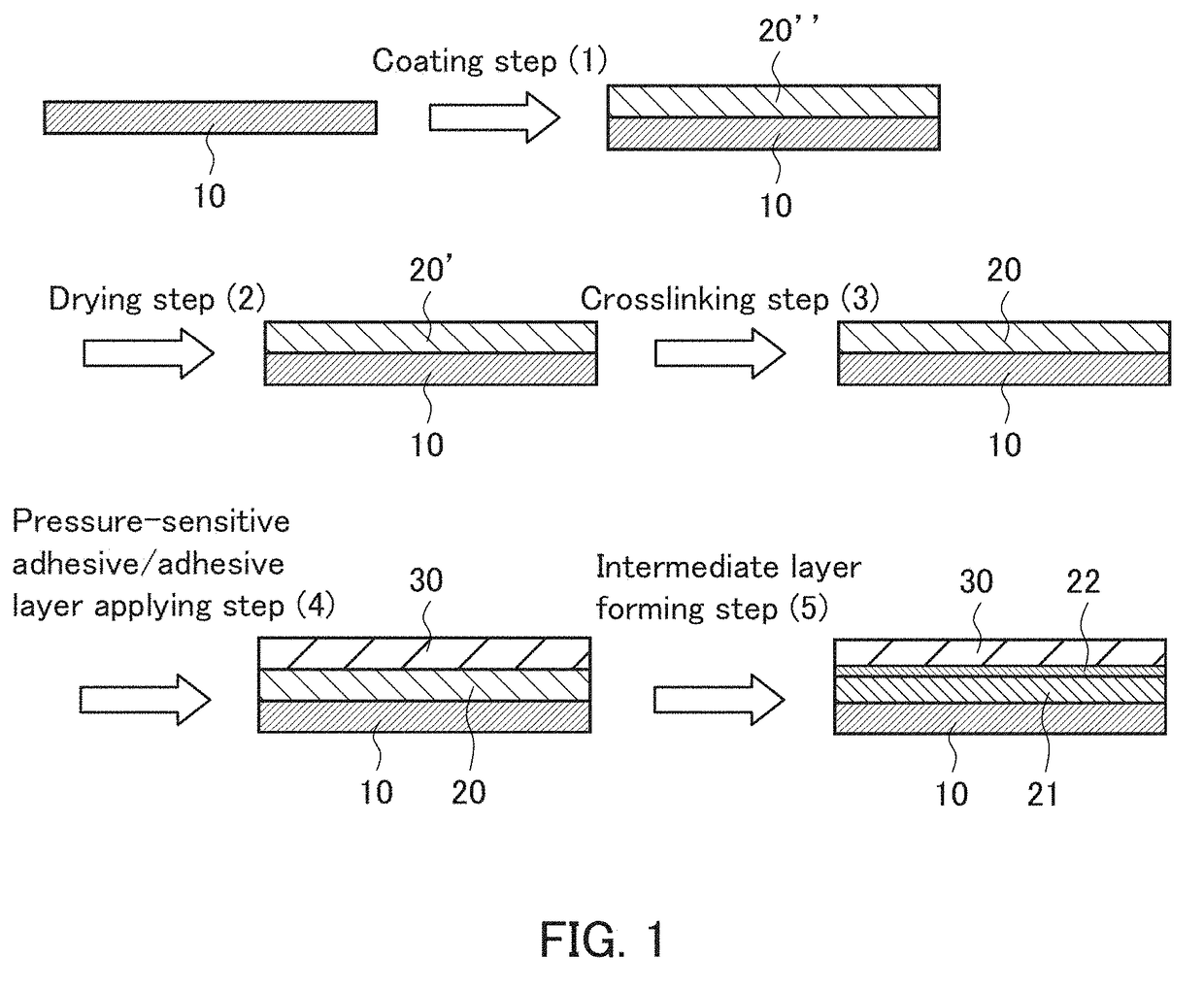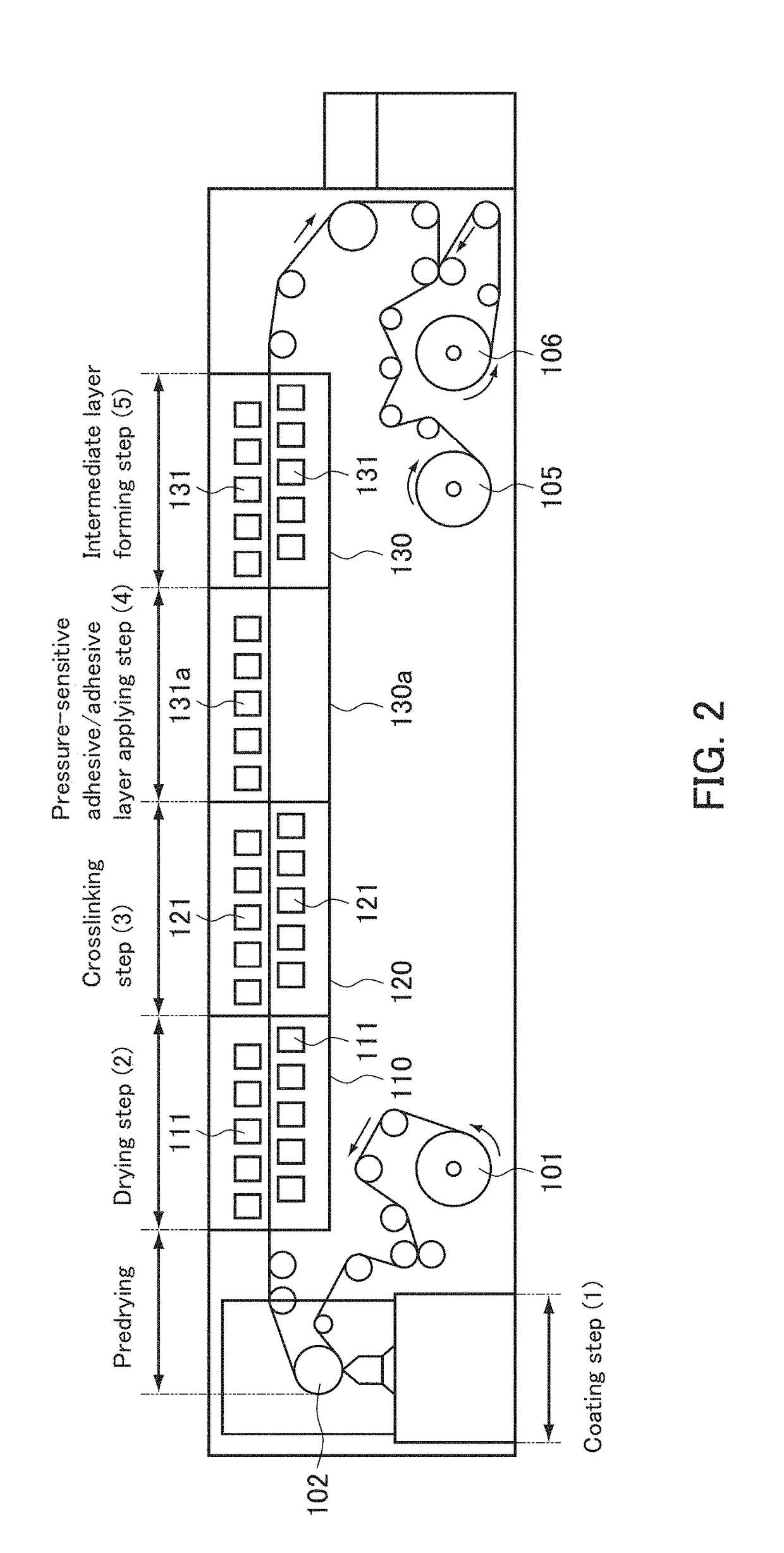Optical laminate, method of producing optical laminate, optical element, and image display
a technology of optical laminates and optical elements, applied in the field of optical laminates, can solve the problems of time and trouble in production, and achieve the effects of superior film strength, easy peeling, and superior film strength
- Summary
- Abstract
- Description
- Claims
- Application Information
AI Technical Summary
Benefits of technology
Problems solved by technology
Method used
Image
Examples
example 1
[0184]In the present example, a laminated film of the present invention (laminated film roll) was produced as described below.
[0185](1) Gelation of Silicon Compound
[0186]0.95 g of MTMS which is the precursor of a silicon compound was dissolved in 2.2 g of DMSO. 0.5 g of 0.01 mol / L oxalic acid aqueous solution was added to the mixture, and the resultant was stirred at room temperature for 30 minutes to hydrolyze MTMS, thereby preparing tris(hydroxy) methylsilane.
[0187]0.38 g of ammonia water having a concentration of 28% and 0.2 g of pure water were added to 5.5 g of DMSO, then the aforementioned mixture that had been subjected to the hydrolysis treatment was added thereto, and the resultant was stirred at room temperature for 15 minutes to gelate tris(hydroxy)methylsilane, thereby obtaining a gelled silicon compound.
[0188](2) Aging Treatment
[0189]The aging treatment was carried out as follows. The mixture that had been subjected to the gelation treatment was incubated at 40° C. for ...
example 2
[0197]A laminated film roll was produced in the same manner as in Example 1 except that 0.018 g of 5 wt % 1,2-bis(trimethoxysilyl) ethane was added to 0.75 g of the sol liquid after addition of the photobase generator solution to adjust the coating liquid in the “(3) Pulverizing treatment and addition of photobase generator” step of Example 1.
example 3
[0198]A laminated film roll was produced in the same manner as in Example 1 except that the amount of the photobase generator added to 0.75 g of the sol liquid was 0.054 g in the “(3) Pulverizing treatment and addition of photobase generator” step of Example 1.
PUM
| Property | Measurement | Unit |
|---|---|---|
| refractive index | aaaaa | aaaaa |
| refractive index | aaaaa | aaaaa |
| thickness | aaaaa | aaaaa |
Abstract
Description
Claims
Application Information
 Login to View More
Login to View More - R&D
- Intellectual Property
- Life Sciences
- Materials
- Tech Scout
- Unparalleled Data Quality
- Higher Quality Content
- 60% Fewer Hallucinations
Browse by: Latest US Patents, China's latest patents, Technical Efficacy Thesaurus, Application Domain, Technology Topic, Popular Technical Reports.
© 2025 PatSnap. All rights reserved.Legal|Privacy policy|Modern Slavery Act Transparency Statement|Sitemap|About US| Contact US: help@patsnap.com



